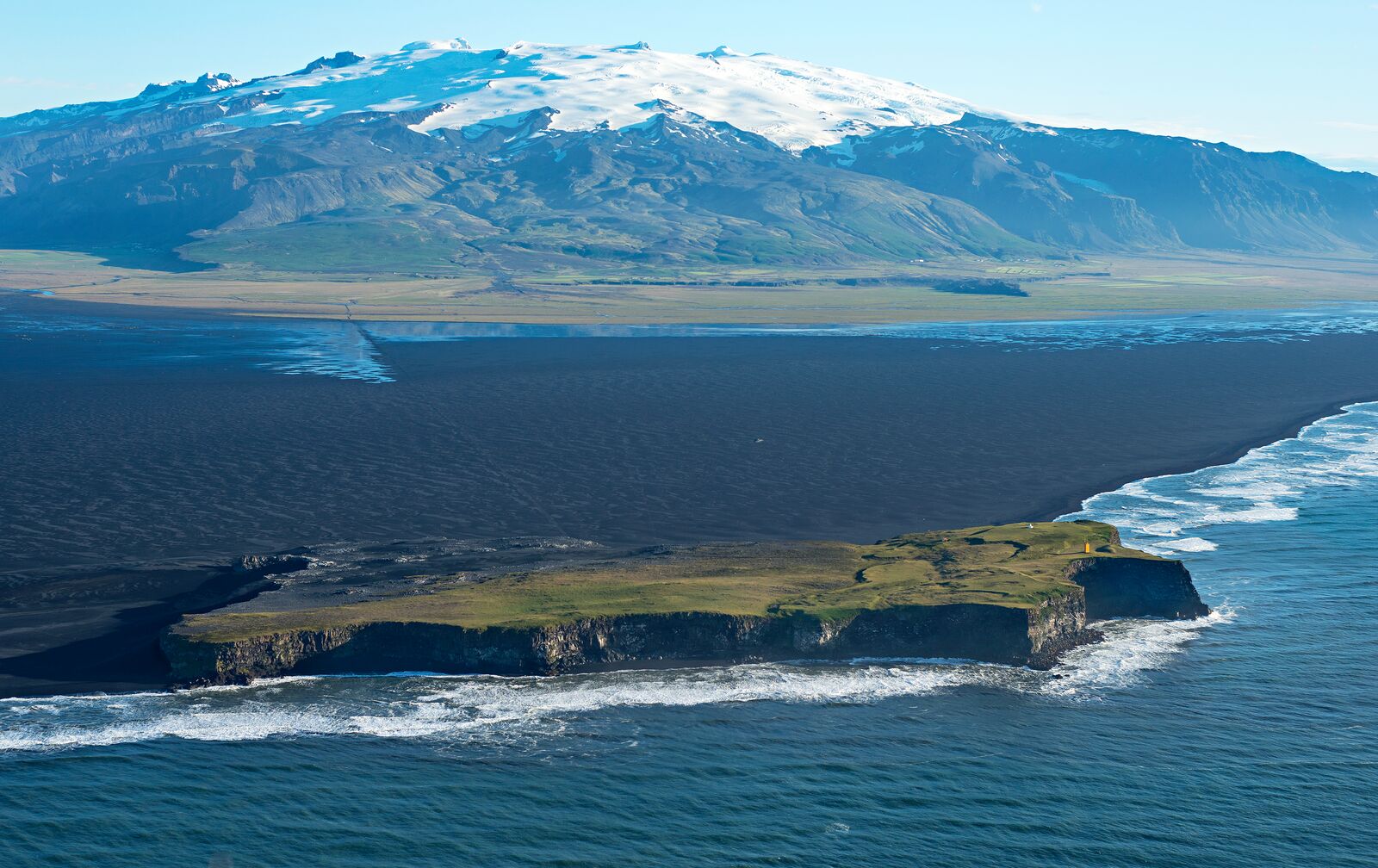Öræfi
The area Öræfi is shaped by glacial erosion and water. Icefalls that come down from the glacier Öræfajökull and the glacial rivers were a major obstacle in previous years. Two eruptions have left their mark on the area, in 1363 and 1727. Before the first eruption, the area was called Litla Hérað, but the eruption was the largest pumice volcanic eruption in Iceland after the country's settlement. In Skaftafell, they are blessed with a pleasant climate as they are sheltered from the glacier Öræfajökull, and there is a variety of vegetation, birch, Sorbus, and a lot of benthic vegetation.

Lots of glaciofluvial drift are in Öræfi after glacial outburst floods, and they are still healing. The most important nesting site of the great skua of the North Atlantic Ocean is there. Skeiðará river was bridged in 1974 but was previously a major traffic barrier.
In Ingólfshöfði cape is a lot of birdlife there; you can find common murre, razorbill, fulmar, and puffin. Bird hunting and egg was collected until 1930. Rowing was also done from Ingólfshöfði until the middle of the 18th century. You can still see ruins from fisherman's huts there, and some placenames tell their story, for example, the cave Skiphellir and Árabólstorfi. Landing conditions at Ingólfshöfði got deteriorated after the river flood Skeiðarárhlaup.
The cooperation Kaupfélag Skaftfellinga was founded in 1918 and began transporting goods on a 60-ton motorboat called Skaftfellingur from Reykjavík to Vík, to Skaftárós, Hvalsík and Ingólfshöfði. The residents of Öræfi had a division there and set up a warehouse at Salthöfði cove in the land of Fagurhólsmýri. Goods were stored there, and sheep were also slaughtered there. The house was called Búðin (e., the store). The smell there was characterized by spices and fruits: Prunes and raisins. Fresh fruits such as apples and oranges were scarce. Pumice drifts that came from the eruption and salted meat were stored in barrels. The pumice drifts were very insulating, and the meat could be stored there until ships could transport it to the market next summer.
There is no milk production in Öræfi. While there was still a small dairy farm there, the idea arose to process cheeses within the area as the cost was too high for MS Iceland Dairies organization to go and fetch milk to Öræfi. It was not considered feasible to have fully equipped production, but one party could start slowly today and start its way forward. People pay high prices for uniqueness and quality, and there is a large market in the area.
Catering operations in Skaftafell: Fishing, all done from Hornafjörður. It is a long way to get all the supplies, and we want to have fresh fish and make lobster soup from their broth that is prepared at Höfn (Glacier goodies). Skaftafell has produced and sold raw sausages and mutton muscle, Skaftafell's delicatessen, but it is not possible to see online whether it is still running.
Seasons:
Rye bread / cooked rye bread was boiled, and the flatbread was baked once a week. Blood pudding from the previous year was still eaten and good in August. The jam was made from heads and legs and liver sausage, but it did not last as long as the blood pudding. A gelding was slaughtered in July, so there was no need to eat older salted meat. Trout was fished in June, and at Ingólfshöfði, some birds could be hunted from time to time all summer. There was not much fresh fish. The residents of Öræfi fished for cod in spring and summer from Ingólfshöfði, according to The Travelogue of Eggert and Bjarni.
